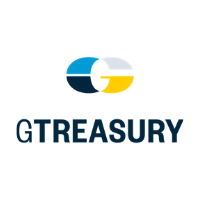Balance Sheet Hedging Health Check: 5 Essential Questions to Ask
By GTreasury
Is your balance sheet hedge program doing its job? Sometimes, balance sheet hedging has hidden weaknesses and nuances that, when not periodically reviewed, can cause even more risk. Here are five questions you can ask to ensure your program is running well.
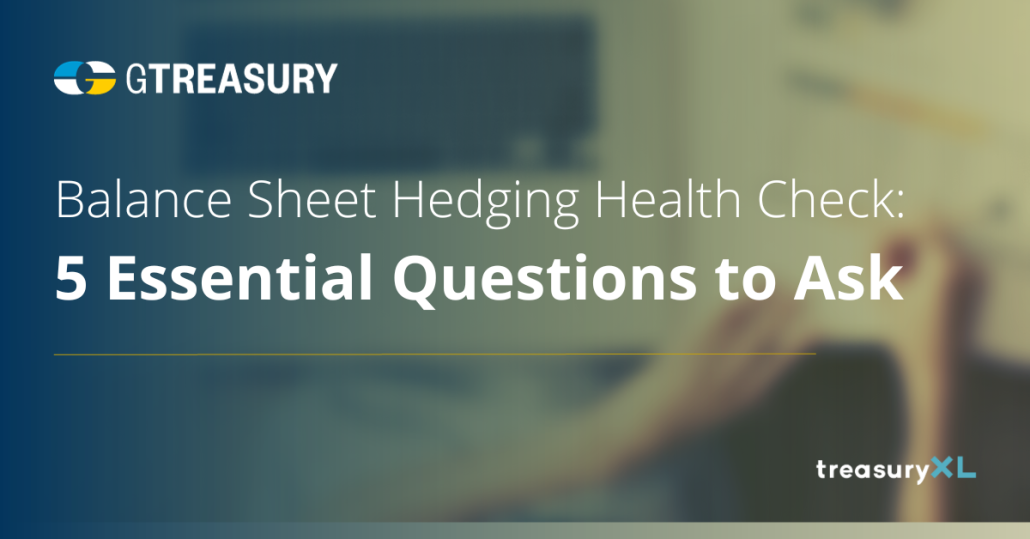
Balance sheet risk – also known as transaction accounting risk – is the most commonly hedged currency risk, resulting from monetary transactions recorded on the balance sheet in a currency other than an entity’s functional currency. Balance sheet hedging mitigates foreign currency gains and losses caused by the difference in currency rates. The hedge essentially neutralizes the P&L.
This type of hedging is common, but so are certain weaknesses that can slip through the cracks and create more risk or ineffective hedge results. Sometimes, companies mitigate certain aspects of currency risk while creating others. Other times, hidden aspects of a hedge program can cause problems.
There can be certain signs that a balance sheet hedge program is not what it seems. Here are five questions you should be asking about your balance sheet hedging to see how well it’s performing.
1. Are you delivering regularly on your hedge contracts?
2. Are you converting cash at the hedge rate?
3. Are you hedging away local currency?
4. Can you explain away residual foreign currency gains & losses?
5. Are your inter-company hedges uneconomic?
Find out why these questions are important.
Can’t get enough? Check out these latest items
 https://treasuryxl.com/wp-content/uploads/2025/07/Featured_Automation-Boutique-1.png
200
200
treasuryXL
https://treasuryxl.com/wp-content/uploads/2018/07/treasuryXL-logo-300x56.png
treasuryXL2025-07-09 07:00:512025-07-08 14:53:53New: Real-time Rabobank account data in Excel & Power BI
https://treasuryxl.com/wp-content/uploads/2025/07/Featured_Automation-Boutique-1.png
200
200
treasuryXL
https://treasuryxl.com/wp-content/uploads/2018/07/treasuryXL-logo-300x56.png
treasuryXL2025-07-09 07:00:512025-07-08 14:53:53New: Real-time Rabobank account data in Excel & Power BI https://treasuryxl.com/wp-content/uploads/2025/07/Surecomp-BLOGS-featured-9.png
200
200
treasuryXL
https://treasuryxl.com/wp-content/uploads/2018/07/treasuryXL-logo-300x56.png
treasuryXL2025-07-08 07:00:102025-07-07 15:26:05In conversation with Surecomp’s Head of Solution Consulting, Arjo Haksteen
https://treasuryxl.com/wp-content/uploads/2025/07/Surecomp-BLOGS-featured-9.png
200
200
treasuryXL
https://treasuryxl.com/wp-content/uploads/2018/07/treasuryXL-logo-300x56.png
treasuryXL2025-07-08 07:00:102025-07-07 15:26:05In conversation with Surecomp’s Head of Solution Consulting, Arjo Haksteen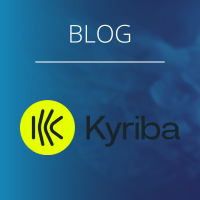 https://treasuryxl.com/wp-content/uploads/2025/02/Blog-Kyriba-2.png
200
200
treasuryXL
https://treasuryxl.com/wp-content/uploads/2018/07/treasuryXL-logo-300x56.png
treasuryXL2025-07-07 07:00:042025-07-04 13:30:217 key benchmarks for treasury’s 2025 investment and liquidity plans
https://treasuryxl.com/wp-content/uploads/2025/02/Blog-Kyriba-2.png
200
200
treasuryXL
https://treasuryxl.com/wp-content/uploads/2018/07/treasuryXL-logo-300x56.png
treasuryXL2025-07-07 07:00:042025-07-04 13:30:217 key benchmarks for treasury’s 2025 investment and liquidity plans https://treasuryxl.com/wp-content/uploads/2024/01/Template_VACANCY-featured.png
200
200
treasuryXL
https://treasuryxl.com/wp-content/uploads/2018/07/treasuryXL-logo-300x56.png
treasuryXL2025-07-04 07:00:232025-07-04 13:20:02Vacancy Treasury Team Lead – Amsterdam
https://treasuryxl.com/wp-content/uploads/2024/01/Template_VACANCY-featured.png
200
200
treasuryXL
https://treasuryxl.com/wp-content/uploads/2018/07/treasuryXL-logo-300x56.png
treasuryXL2025-07-04 07:00:232025-07-04 13:20:02Vacancy Treasury Team Lead – Amsterdam https://treasuryxl.com/wp-content/uploads/2023/03/Treasurer-Search-Logo.png
200
200
treasuryXL
https://treasuryxl.com/wp-content/uploads/2018/07/treasuryXL-logo-300x56.png
treasuryXL2025-07-03 11:15:142025-07-10 11:39:51Treasury Team Lead – Amsterdam @ Treasurer Search
https://treasuryxl.com/wp-content/uploads/2023/03/Treasurer-Search-Logo.png
200
200
treasuryXL
https://treasuryxl.com/wp-content/uploads/2018/07/treasuryXL-logo-300x56.png
treasuryXL2025-07-03 11:15:142025-07-10 11:39:51Treasury Team Lead – Amsterdam @ Treasurer Search https://treasuryxl.com/wp-content/uploads/2025/07/Europol.png
200
200
treasuryXL
https://treasuryxl.com/wp-content/uploads/2018/07/treasuryXL-logo-300x56.png
treasuryXL2025-07-03 11:13:582025-07-10 11:37:11Specialist – Finance @ Europol
https://treasuryxl.com/wp-content/uploads/2025/07/Europol.png
200
200
treasuryXL
https://treasuryxl.com/wp-content/uploads/2018/07/treasuryXL-logo-300x56.png
treasuryXL2025-07-03 11:13:582025-07-10 11:37:11Specialist – Finance @ Europol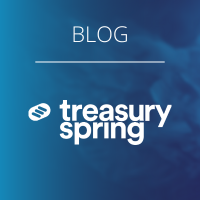 https://treasuryxl.com/wp-content/uploads/2025/04/Treasury-Spring-van-Template-2.png
200
200
treasuryXL
https://treasuryxl.com/wp-content/uploads/2018/07/treasuryXL-logo-300x56.png
treasuryXL2025-07-03 08:49:572025-07-03 08:51:48Heating up? Political tension holds, whilst market calm returns.
https://treasuryxl.com/wp-content/uploads/2025/04/Treasury-Spring-van-Template-2.png
200
200
treasuryXL
https://treasuryxl.com/wp-content/uploads/2018/07/treasuryXL-logo-300x56.png
treasuryXL2025-07-03 08:49:572025-07-03 08:51:48Heating up? Political tension holds, whilst market calm returns.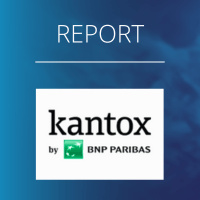 https://treasuryxl.com/wp-content/uploads/2025/02/KantoxBLOGS-featured-3.png
200
200
treasuryXL
https://treasuryxl.com/wp-content/uploads/2018/07/treasuryXL-logo-300x56.png
treasuryXL2025-07-02 07:00:212025-06-30 16:36:19Removing FX Gains & Losses: Balance Sheet Hedging Redefined
https://treasuryxl.com/wp-content/uploads/2025/02/KantoxBLOGS-featured-3.png
200
200
treasuryXL
https://treasuryxl.com/wp-content/uploads/2018/07/treasuryXL-logo-300x56.png
treasuryXL2025-07-02 07:00:212025-06-30 16:36:19Removing FX Gains & Losses: Balance Sheet Hedging Redefined https://treasuryxl.com/wp-content/uploads/2023/03/Treasurer-Search-Logo.png
200
200
treasuryXL
https://treasuryxl.com/wp-content/uploads/2018/07/treasuryXL-logo-300x56.png
treasuryXL2025-07-01 10:25:252025-07-01 10:35:38Specialist Trade Finance (m/w/d) – Hessen
https://treasuryxl.com/wp-content/uploads/2023/03/Treasurer-Search-Logo.png
200
200
treasuryXL
https://treasuryxl.com/wp-content/uploads/2018/07/treasuryXL-logo-300x56.png
treasuryXL2025-07-01 10:25:252025-07-01 10:35:38Specialist Trade Finance (m/w/d) – Hessen
